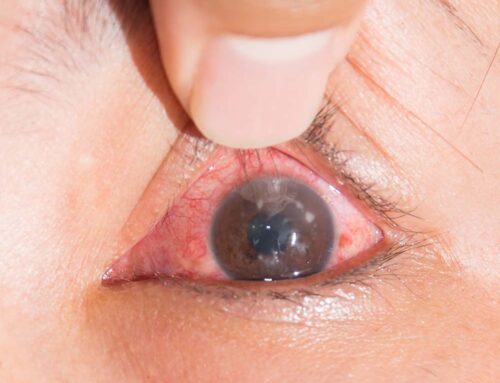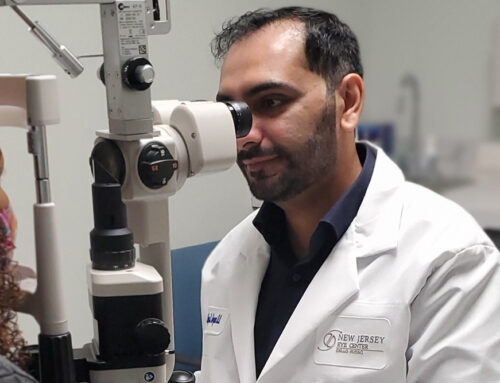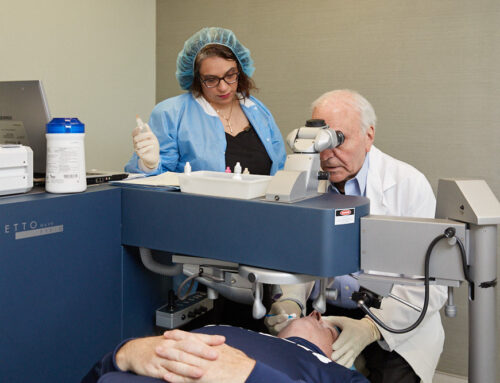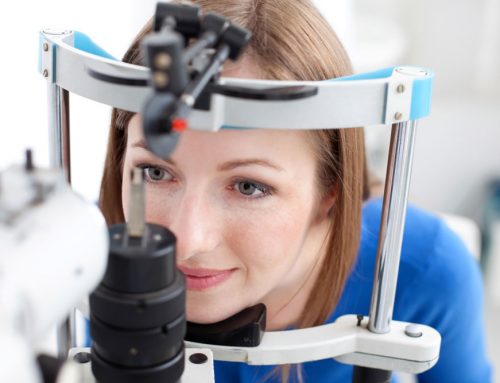
We all get headaches, but do we know that it is eye diseases that can cause them?
The headaches are very common and can last for a few seconds or be a persistent problem. Persistent headaches which feel like they are behind the eyes may be connected to eye diseases.
Sometimes a simple pain relief tablet is all that is required to ease the headache. But if it does not go away, you need to identify the cause so the correct treatment can be given.
Conditions that can cause headaches
There are many disorders, affecting different parts of the body, that can be the cause of headaches. Sinus issues, ear and jaw problems, arthritis, and high blood pressure can all bring on a headache.
Tension, strain, anxiety, stress, and tiredness can cause muscles to contract, which may also be the cause. In more serious cases, a headache can be an indication of a buildup of pressure in the brain.
However, commonly, it may be eye diseases that cause headaches. With the correct diagnosis and treatment, these can be easily kept at bay.
What causes pain behind your eyes?
A headache can often feel like it is just behind your eyes. Sometimes it is a dull ache. Other times it can be an intense, sharp pain – like someone is stabbing you in the eye.
Tension headache
One of the most common reasons for pain behind the eye is a tension headache. These headaches can be triggered by many different things including dry eyes, eye strain, and eye diseases.
Symptoms often include additional pain in the neck and forehead. Some people describe it as feeling like there is a band being pulled tight around the head.
Migraines
More severe than tension headaches are migraines. They are recurring and are often brought on by stress, hormones, particular smells or flashing lights.
It is believed headaches are caused by a reduction of blood flow to the brain. This originates in the occipital cortex, located at the base of the skull.
As well as pain behind the eyes, there are often some visual disturbances. Sensitivity to light or strange, visual auras can occur prior to the headache. Symptoms are short lived, and last around 20 minutes.
Although there is no cure for migraines, they are not considered a serious condition. Additional attacks can be prevented by seeking proper advice and treatment.
What is an ocular migraine?
Approximately one in every 200 people who suffer from migraines will have an ocular migraine. Unlike normal migraines, they generally cause pain behind just one eye. With ocular migraines, the retinal blood vessels are the source of the blood flow reduction.
Visual disturbances last longer than with other migraines. They can include blind spots, flashing lights, and zig-zag lines.
Additional symptoms may also be experienced. These include tingling/numbness in the hands or face, a mental fogginess, and a disrupted sense of taste, touch, or smell.
A throbbing headache on one side of your head, lasting from 4 to 48 hours, could be the sign of an imminent attack.
Once it hits, an ocular migraine itself is usually brief and lasts less than five minutes. But they can last anywhere up to 30 minutes. Immediate relief may come from resting in a darkened room, drinking fluids and placing a cool compress on the forehead.
Headaches and eye diseases: ocular migraine
While many ocular migraines are not brought about because of an eye disease, they may indicate one. If a loss of vision in one eye occurs during an ocular migraine, this is indicative of a more serious issue and requires immediate medical evaluation.
Can bad eyesight cause headaches?
If you find yourself squinting to see things more clearly, you could have bad eyesight. Maybe you have to hold objects further away from, or closer to, your eyes in order to focus better.
Although the causes of migraines have not been fully identified, bad eyesight could be a contributing factor. When weakened muscles and nerves are constantly straining, headaches, and potentially migraines can occur.
Eye strain and headaches
In our eyes, the lens and cornea work together to focus images on the retina. When problems appear in the eye, these two components are affected and the process is disrupted. Muscles need to work harder, which causes eye strain. This, in turn, brings about headaches.
Hyperopia
In other words, long-sightedness. This occurs when the image, instead of being focused on the retina, is focused somewhere behind the eye. Close-up objects appear blurry causing the sufferer to strain in order to see clearer.
Astigmatism
When the cornea is an irregular shape, objects can seem fuzzy. Again, someone with astigmatism will feel the need to squint and strain, causing a headache.
Presbyopia
As a result of aging, the lens in the eye hardens. This causes difficulty in being able to focus properly. The result is sore eyes and headaches.
General eye strain
Any activity requiring concentration of the eye for a long period of time can be a cause of eye strain. Driving, reading, writing or trying to see in low light, can all be a trigger.
Digital devices – computers and smartphones especially – have become part of our daily lives. When reading on these screens, people tend not blink as much. This results in dry eyes.
There is often glare or reflection given off and contrast can be poor between background and text. People who use these devices for more than a couple of hours at a time are prone to experience eye strain.
If you suspect you may have eye strain, book an appointment with an eye specialist. Even if you wear glasses or contact lenses, prescriptions may need to be changed.
Headaches and eye diseases: glaucoma
Glaucoma is a disease of the eye caused by fluid not draining properly. A buildup of pressure occurs which leads to damage of the optic nerve. Because the optic nerve carries information to the brain, there is a loss of vision.
A headache caused by glaucoma can vary from mild to severe pain around the eyes or forehead. You may also experience nausea and vomiting.
Commonly, glaucoma is mistaken for a migraine as blurred vision can occur. To make the correct diagnosis, the pressure in the eye needs to be measured. It cannot be prevented but, proper treatment will slow the progress of glaucoma. Therefore, it is essential to seek medical advice.
If you are experiencing headaches and believe they may be caused by an eye disease, contact the New Jers.ey Eye Center in Bergenfield, NJ. Book an appointment with one of our eye doctors or walk in to ensure you are receiving the correct treatment.







